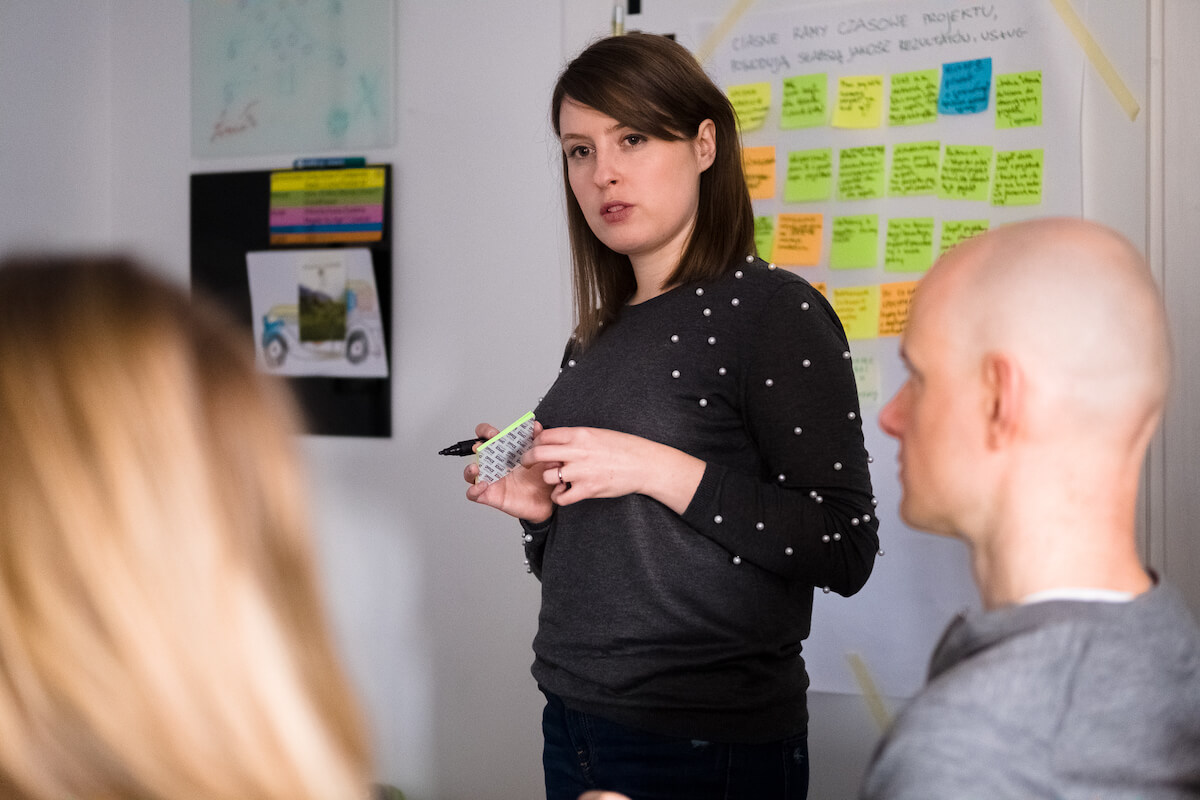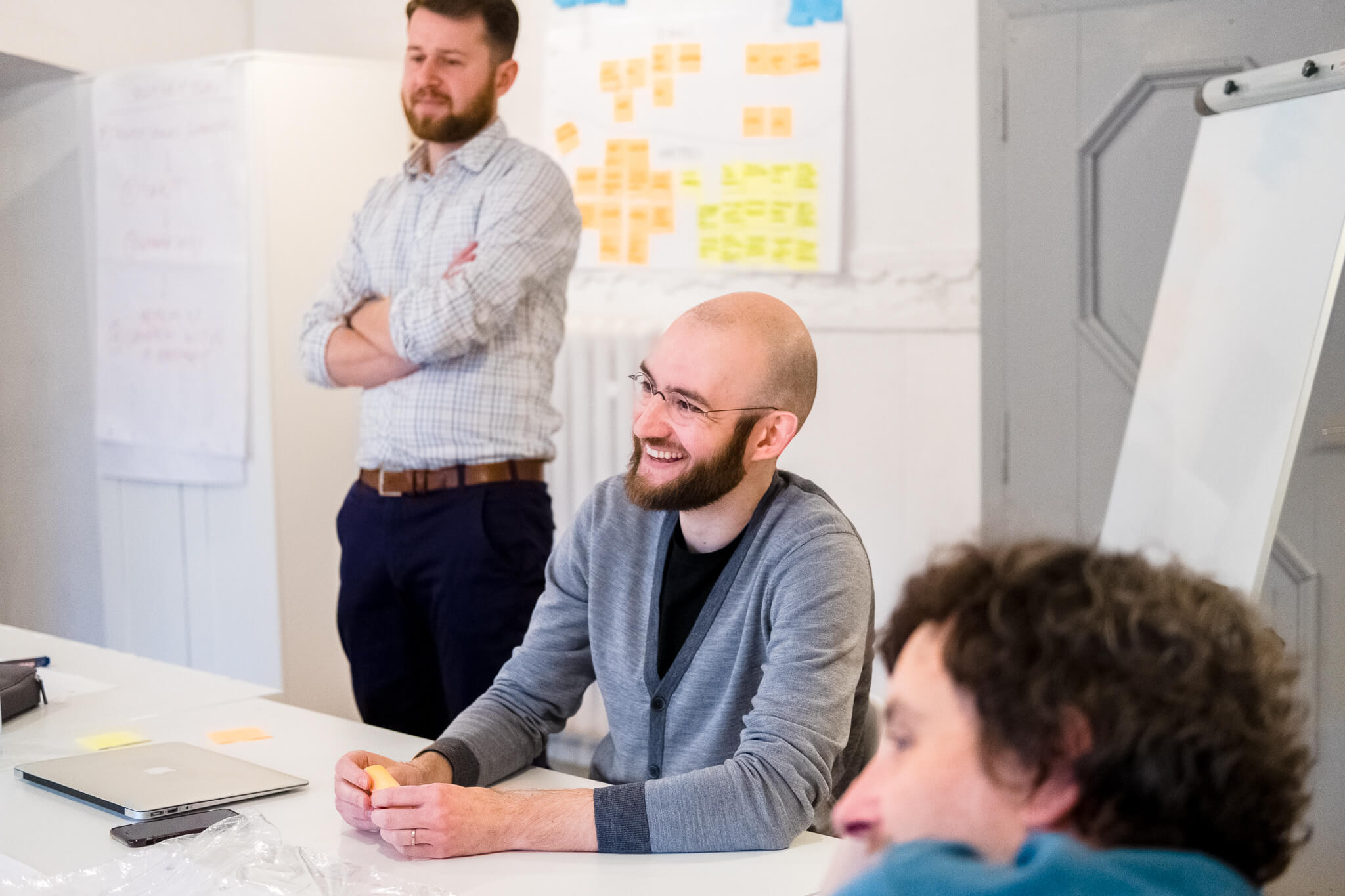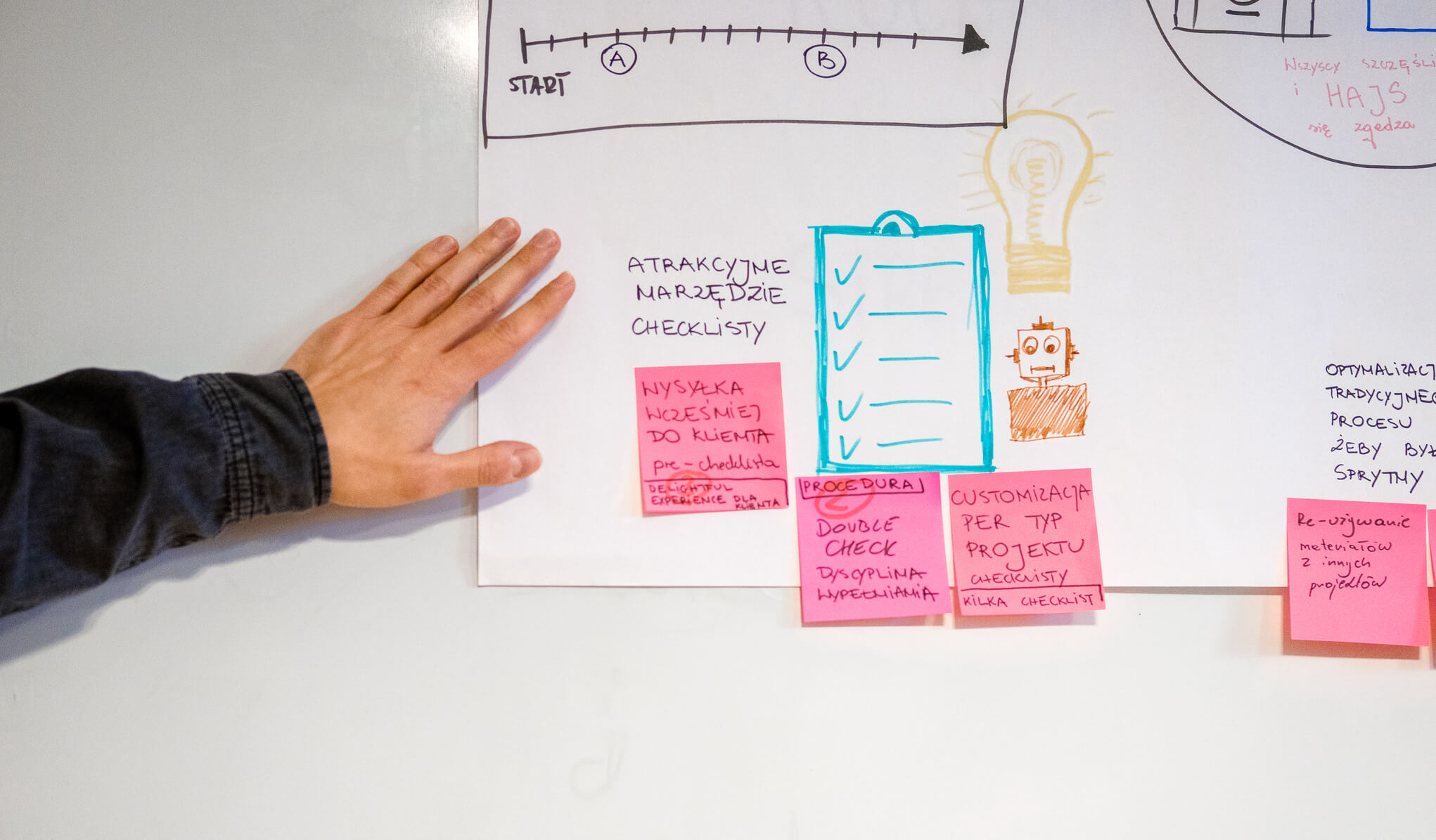Innovation ecosystem, innovation lab… There has been a lot of articles written about it and it seems to be something very innovative, very modern, and very creative. What exactly is a Living Lab and what does an organisation gain from it?
What does a living lab look like in organisations?
In practice, a living lab can be compared to a start-up inside a company, usually a large one. An interdisciplinary team, including the company’s customers, develops innovative solutions: it diagnoses and analyses user’s needs, designs products and services that meet these needs and invites customers to test them. Everything takes place in a specially prepared creative space or – in the case of tests – in the user’s natural environment if the tested solution requires it.
There is no single definition of a living lab. However, when we take a closer look at various sources, it turns out that they have several key elements in common, which helps to understand the essence of this concept:

Diverse participants. A successful and efficient living lab should involve people from different backgrounds or environments: the academic world, the public sector, the business world, the employees of a particular company, the creators and consumers of a product. Yes, users are involved from the very beginning of the innovation process and their role is absolutely crucial!
Collaboration. Co-creation, involvement, creative space are the keywords behind which the cooperation of the above mentioned parties is hidden. The invited potential users of an innovative product or service are active participants.
Reality. In the process of creating innovative solutions, it is important to refer to real circumstances, real environment or context of product use. Therefore, many definitions mention real-life experimentation. Testing with users is based on the maximum possible reproduction of the context of product use or the choice of testing method in the natural environment of the user.
Creativity. Ideas are the fuel for the processes that create innovative products and services. That’s why living labs become a place for generating ideas and capturing ideas from a wide variety of sources – from the members of the living lab team to employee competitions, customer competitions, meetings with industry and start-ups, and hackathons. The monitoring, evaluation, and selection of ideas are one of the core tasks of the living lab. In further stages, the selected ideas are transformed into solution prototypes (MVPs).
Evaluation. The creation of new solutions is inevitably accompanied by evaluation. Solutions are evaluated, tested with users. Appropriate amendments and improvements are introduced on the basis of data collected during the tests.
Living Lab – how do innovation leaders do it?
Still wondering how innovation labs in companies work in practice? Let’s start with the biggest ones.
Google X – how disruptive, or anticipatory, labs work
Google X, a lab located in Mountain View, California, is associated by many with the famous Google Glass eyewear, causing both delight and controversy. Google X is an interdisciplinary group of scientists, engineers, and entrepreneurs. These specialists build and release technologies that aim to improve the lives of millions or even billions of people. As Google X puts it, the goal is to have 10 times more impact in solving the world’s most complex problems and challenges, not just a 10% improvement. In other words, Google X specialists are getting ahead of the curve – often being the first to work on a new concept that is destined to become a revolution in its field.
The Google lab takes on projects that have the high aspirations, research risks, and speed and ambition characteristic of startups. Google X projects include Google’s autonomous car (now known as Waymo), balloons that bring Internet connectivity to areas that didn’t have access to it (Loon), or projects in the area of AI and Machine Learning.

The approach represented by Google is characteristic of so-called disruptive labs. A disruptive lab looks for new business models. This type of lab aims to monitor possible disruptions from the innovation horizon two and further.
Disruptive innovation centers are therefore present in companies whose priority is to renew their markets and position themselves as leaders in creative business models. The projects born in such labs generally bring with them a completely new value proposition and at the same time cause a change in usage and consumption habits.
Disruptive labs are those that are several steps ahead of the current state and dictate new rules of the game. Apart from Google, companies such as Apple, Uber, and Airbnb also operate this way.
Airbus, or open innovation
Airbus’ first lab, the Airbus BizLab started operations in March 2015 in Toulouse, France. It was later joined by Hamburg, Madrid, and Bangalore, which created a global network.
Are you working on innovative products and services?
Airbus, noticing the ever-intensifying competition in the aerospace market at the time, focused on a strategy of rapid commercialization of innovative ideas drawn both from within its own organization and from outside, including customers and external partners.
Based on this premise, the company built a global accelerator, thus creating a space for two worlds to meet: intrapreneurs, or Airbus employees who submit ideas, with startups and agile companies from outside.
This approach is both extremely valuable and mutually beneficial. The startups involved are supported by a pool of experts and mentors from various disciplines (technology, law, finance, marketing, design, go-to-market), while Airbus benefits from the agility typical of startups, which allows it to break down a number of barriers encountered by large organizations characterized by lower dynamism. This combination of scale and agility results in rapid innovation.
Among the projects carried out at Airbus BizLab, we can find e.g. software for inflight entertainment systems (passenger screens) using augmented reality, solutions supporting ground handling, or solutions for managing contracts with suppliers.
Airbus’ BizLab in its mode of operation resembles most of the so-called Open Innovation Labs. Such labs rely on collaboration with other parties to build networking and partnerships to create innovation. These labs focus on collaborating with start-ups, partners, or users while sharing information and co-creating innovations.
Open innovation can take place at virtually any stage of innovation creation: at the first stage of the innovation process, during the creation process, or at the end of the commercialization process. Acceleration or incubation programs are precisely the tools of open innovation.
Living labs in other sectors
It might seem that the idea of innovation labs is reserved for companies whose business itself concerns new technologies or the production of high-tech products (such as Airbus or Google). Nothing could be further from the truth. Living labs have already entered virtually every industry. Let’s look at banking for a moment.
The very dynamic development of new technologies has significantly influenced behaviours and expectations of bank customers. Banks quickly adapted and began to bet on flexibility and agility and often invested in the development of living labs.
A living lab can be found, for example, in the Polish ING branch, ING Bank Slaski. The bank noticed one of the important industry trends, i.e. co-creating new products and services with customers. Since spring 2017, the Innovation ING Lab has been operating in Katowice, described as a space that fosters creative thinking and the creation of revolutionary innovations.
For ING, a key element in launching new products is their proprietary PACE methodology. PACE is based firstly on working in small, independent, and multidisciplinary teams, and secondly on working with customers to be able to exclude early on those projects that do not respond to real user needs. Such an approach makes it possible to eliminate wrong assumptions at every stage of work, from idea to prototypes, and therefore to introduce the right solutions to the market.
Alior Bank also created a similar innovation laboratory. The unit creates concepts of new solutions during workshops in the spirit of design thinking and then tests and verifies them with users. At the same time, Alior is working on creating an ecosystem of partnerships with FinTech companies, which is why it organized the RBL_START accelerator, a program in which fintechs start cooperation with the bank on the design path.
And what does the organisation really gain?
Living lab brings a number of benefits to organisations, including faster time-to-market innovation, more flexible but consistent innovation process, and the ability to diversify company revenue. Living lab helps to bring new products, services, brands, and technologies to market quickly, and brings the right solutions to market because they are based on real user needs and solve real customer problems.
By involving interdisciplinary teams, it helps to take into account multiple perspectives and reconcile business requirements with user expectations in the best possible way. At the same time, in the process of creating innovations, companies often discover new markets and their, so far unnoticed, potential, at the same time gaining a chance to win new groups of customers.
But that’s not all. Living labs also improve existing products and services, or, on the contrary, gain knowledge that suggests eliminating an existing product or service and striving to offer something completely new, as this can bring much greater benefits to the business.
Are you inspired by the topic of innovation lab?




